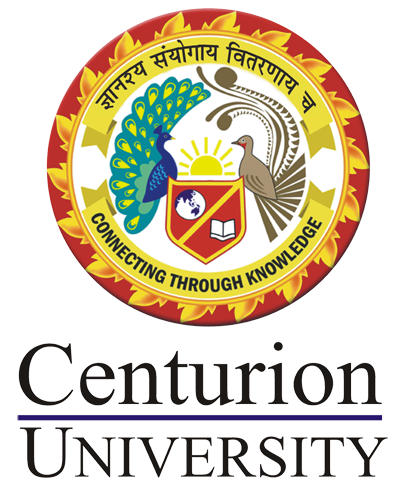CROP IMPROVEMENT – I
Course Attendees
Still no participant
Course Reviews
Still no reviews
Code(Credit) : ASPG3104 (1+1)
Course Objectives
• To understand the origin, distribution and different breeding methods to be adopted for the development of varieties / hybrids in various Kharif crops
• To study about the plant genetic resources, centres of diversity and breeding for resistance to biotic and abiotic stresses
• To learn about the influence of Genotype x Environment interaction on yield / performance
Learning Outcomes
By the end of this course students will imparted with knowledge on the botanical description, origin, distribution and various breeding approaches used for the development of varieties / hybrids in various Kharif crops
Course Syllabus
Module: I
1. Study in respect of origin, distribution of species, wild relatives an d forms and major breeding procedures of Rice and Maize
2. Study in respect of origin, distribution of species, wild relatives an d forms and major breeding procedures of Sorghum, pearl millet and Finger millet
3. Study in respect of origin, distribution of species, wild relatives an d forms and major breeding procedures of Redgram, soybean, greengram and blackgram
4. Study in respect of origin, distribution of species, wild relatives an d forms and major breeding procedures of Groundnut, sesame and castor
5. Study in respect of origin, distribution of species, wild relatives an d forms and major breeding procedures of cotton
Module: II
• Plant Genetic Resources: definition, important features of germplasm, kinds of germplasm, classification of gene pool, types of seed collections, germplasm activities, exploration – merits and demerits of exploration and collection of germplasm, germplasm conservation – in situ conservation, ex-situ conservation, evaluation, documentation, distribution and utilization;
Module: III
1. Important concepts of breeding self pollinated crops
2. Important concepts of breeding cross pollinated crops
3. Important concepts of breeding vegetatively propagated crops
Module: IV
1. Biotic stress (Disease resistance)
2. Study of Qualitative and Quantitative characters
3. Biotic stress (Insect resistance)
4. Abiotic stress tolerance
Module: V
• Seed production technology in self pollinated, cross pollinated and vegetatively propagated crops
Module: VI
• Ideotype concept, main features of ideotype breeding, features of ideotypes of wheat, rice, maize, barley and cotton
Module: VII
• Genotype, environment and their interaction; Adaptability & stability, types of adaptation- adaptability; Stability: models for stability analysis;
Practicals:
Emasculation and hybridization techniques in Cotton, Maize, Sesame, Cowpea, Greengram, Blackgram, Sorghum, Pearl millet, Groundnut and Soybean; Maintenance breeding of different kharif crops; Handling of germplasm and segregating populations by different methods like pedigree, bulk and single seed decent methods; Study of field techniques for seed production and hybrid seeds production in Kharif crops; Estimation of heterosis, inbreeding depression and heritability; Layout of field experiments; Study of quality characters, donor parent;
Suggested reading:
• Allard, R.W. 1960. Principles of Plant Breeding. John Wiley and Sons
• Kumar, N. 2006. Breeding of Horticultural Crops – Principles and Practices.
• Phundan Singh, Essentials of Plant Breeding.
• Sharma, J.R. Principles and Practice of Plant Breeding.
• Singh, B.D. Plant Breeding: Principles and Methods.
Session Plan
Session 1
Study in respect of origin, distribution of species, wild relatives an d forms and major breeding procedures of Rice and Maize
Lec 1.Centers of origin, distribution of species, wild relatives in different cerealshttps://www.youtube.com/watch?v=JFN0aPvQzDchttps://www.youtube.com/watch?v=7V4t0FTQcVI
Session 2
Study in respect of origin, distribution of species, wild relatives an d forms and major breeding procedures of Sorghum, pearl millet and Finger millet
Lec 2.Centers of origin, distribution of species, wild relatives in different cereals othershttps://www.youtube.com/watch?v=WXzOC4PnZFYhttps://www.youtube.com/watch?v=J1yaD1mgA7Mhttps://www.youtube.com/watch?v=PdZvc_AIIgA&t=423s
Session 3
Study in respect of origin, distribution of species, wild relatives an d forms and major breeding procedures of Redgram, soybean, greengram and blackgram
Lec 3.Centers of origin, distribution of species, wild relatives in different pulseshttps://www.youtube.com/watch?v=L0dHVMbXErwhttps://www.youtube.com/watch?v=0Uux87T2riEhttps://www.youtube.com/watch?v=d6ZsS6WZd_I
Session 4
Study in respect of origin, distribution of species, wild relatives an d forms and major breeding procedures of Groundnut, sesame and castor
Lec 4.Centers of origin, distribution of species, wild relatives in different oilseedshttps://www.youtube.com/watch?v=7p5TinkLClQhttps://www.youtube.com/watch?v=680VFaDj4hYhttps://www.youtube.com/watch?v=YVQ2NrC6Psk&t=24s
Session 5
Study in respect of origin, distribution of species, wild relatives an d forms and major breeding procedures of cotton
Lec 5.Centers of origin, distribution of species, wild relatives in different cash cropshttps://www.youtube.com/watch?v=SnLrLN9cPsw
Session 6
Session 7
Study of Qualitative and Quantitative characters
Lec 7.study of genetics of qualitative and quantitative characters
Session 8
Important concepts of breeding self pollinated crops
Lec 8.Important concepts of breeding self pollinatedhttps://www.youtube.com/watch?v=dZ-1Rrdsih0
Session 9
Important concepts of breeding cross pollinated crops
Lec 9. Important concepts of breeding cross pollinatedhttps://www.youtube.com/watch?v=KnL1S-bgeM0
Session 10
Important concepts of breeding vegetatively propagated crops
Lec 10. Important concepts of breeding vegetatively propagated ropshttps://www.youtube.com/watch?v=fII4CoVoI3w
Session 11
Biotic stress (Disease resistance)
Lec 11. Biotic stress (Disease)https://www.youtube.com/watch?v=PwafAu2fdAk
Session 12
Biotic stress (Insect resistance)
Lec 12. Biotic stress (Insect)https://www.youtube.com/watch?v=_H2DB5YHsFI
Session 13
Abiotic stress tolerance
Lec 13. Abiotic stresshttps://www.youtube.com/watch?v=0oSX1S54VAw
Session 14
Seed production technology in self pollinated, cross pollinated and vegetatively propagated crops
Lec 14. Seed production technologyhttps://www.youtube.com/watch?v=6TvYhv4XG8c
Session 16
Adaptability & stability
Lec 16. Adaptability & stabilityhttps://www.youtube.com/watch?v=05WCVHdOtvc
Session 21
Emasculation and hybridization techniques in Greengram & Blackgram
Session 22
Emasculation and hybridization techniques in Sorghum & Pearl millet
Session 23
Case Studies
Our Main Teachers
Working as Assistant Professor in department of Genetics and Plant Breeding


Recent Comments